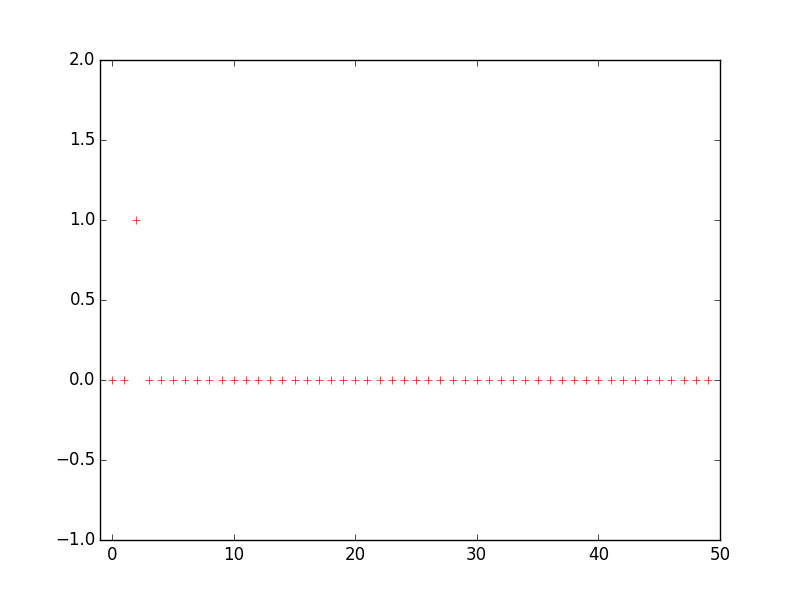-
The Basic Functions
06/09/2015 at 01:21 • 0 commentsDuring my free time in the past few weeks I've worked on my code, so here's a semi-fleshed out skeleton of the code so far. It will also be on Github in the coming weeks. There's a couple of modifications to do, specifically, a better and more thorough plot of not just the neuron pulse times, but also the synaptic event times, and also the projected pulse time calculations need a little tweaking.
''' # Neural Network Model # This program will simulate an event driven model of a pulsed neural network. ''' __author__ = 'JangoJungle' from numpy import * import random as rand import matplotlib.pyplot as plt # A quick function to get the synapse state form for plotting -- Not Used Yet def get_state(w, t, a): stateraw = Decimal(w - w * abs(t - a)) index = 0 for x in stateraw: if x <= 0: stateraw[index] = 0 index += 1 return stateraw # declare/initialize variables # other variables next_event_time = 0 current_time = 0 fault = 9999999 count = 0 interval = linspace(0,49,50) # synaptic variables synaptic_weights = r_[[1, 1, 1]] state_of_synapses = r_[[0, 0, 0]] # 1 for up, -1 for down, 0 for idle synaptic_delays = r_[[rand.randint(0, 3), rand.randint(0, 3), rand.randint(0, 3)]] synaptic_event_times = r_[[1, fault, 1]] # start the trigger and pulse train [pulse train, neuron output, trigger] synapse_connection_matrix = r_[1, 1, 1] # neuron variables previous_activity_slope = r_[0] current_activity_slope = r_[0] threshold = 1.5 neuron_pulse_times = r_[fault] neuron_connection_matrix = c_[[0, 1, 0]] # only one column: only one neuron, connected to synapse 2 pulse_points = linspace(0,0,50) # Start loop: while (count < 50): # Go to next event time current_time = next_event_time # Calculate the Next Neuron firing time -- how to adjust this for multiple neurons? current_activity_slope[0] = sum(state_of_synapses*synaptic_weights) + previous_activity_slope[0] if current_activity_slope[0] > 0: neuron_pulse_times[0] = threshold/current_activity_slope[0] + current_time else: neuron_pulse_times[0] = fault previous_activity_slope[0] = current_activity_slope[0] # Find the next event time and type next_synapse_event_time = min(synaptic_event_times) next_synapse = argmin(synaptic_event_times) # note: argmin returns a 1d index next_neuron_firing_time = min(neuron_pulse_times) next_neuron = argmin(neuron_pulse_times) next_event_times = r_[[next_synapse_event_time, next_neuron_firing_time]] next_event_time = min(next_event_times) event_type = argmin(next_event_times) # 0 for synapse, 1 for neuron # Do required operations for each event type if next_event_time != fault: ''' # If it's a synapse event time, update the states ''' if event_type == 0: # synaptic event == 0 # Update states if state_of_synapses[next_synapse] == 0: state_of_synapses[next_synapse] = synaptic_weights[next_synapse] synaptic_event_times[next_synapse] += 1 print ('Synapse {} is firing.'.format(next_synapse)) elif state_of_synapses[next_synapse] == synaptic_weights[next_synapse]: state_of_synapses[next_synapse] = -synaptic_weights[next_synapse] synaptic_event_times[next_synapse] += 1 elif state_of_synapses[next_synapse] == -synaptic_weights[next_synapse]: state_of_synapses[next_synapse] = 0 synaptic_event_times[next_synapse] = fault # reset the pulse train if it's the pulse train if next_synapse == 0: synaptic_event_times[next_synapse] = (2 + current_time + synaptic_delays[next_synapse]) ''' # If it's a neuron firing time, reset the synapses, find all the synapses this neuron is connected to # and then update those synapses ''' if event_type == 1: # neuron firing = 1 print ('Neuron is firing.') # reset synapses state_of_synapses[0] = state_of_synapses[1] = state_of_synapses[2] = 0 synaptic_event_times[0] = synaptic_event_times[1] = synaptic_event_times[2] = fault # find all the synapses this neuron is connected to and update them connected_synapses = where(neuron_connection_matrix[next_neuron])[0] for synapse in connected_synapses: synaptic_event_times[synapse] = current_time + synaptic_delays[synapse] neuron_pulse_times[next_neuron] = fault # reset the pulse train if next_synapse == 0 and state_of_synapses[next_synapse] == 0: synaptic_event_times[next_synapse] = (2 + current_time + synaptic_delays[next_synapse]) # update the pulsetimes array to hold these new times: pulse_points[count] = 1; # print out some test data print ('-- SS -- SET -- NET -- CT') print state_of_synapses, ' -- ', synaptic_event_times, ' -- ', next_event_time, ' -- ', current_time print ('\n') # advance the count count += 1 # show the plot of the pulse_points plt.plot(interval, pulse_points, '+r') plt.axis([-1, 50, -1, 2]) plt.show()This code currently generates plots that look like this:![]()
Essentially all this is showing is at which counts the neuron is firing, 1 being a pulse. At each count in the code, it updates to the next event time, and prints out if the neuron pulses here. So what needs to be cleaned up is instead of going by count in the x axis, I need to switch it to time. Easy switch, but one step at a time.
Basic Pulsed Neural Network Simulation
A simulation of a basic pulsed neural network, just slightly different than a traditional neural network.
 JangoJungle
JangoJungle